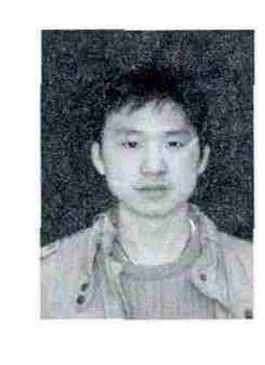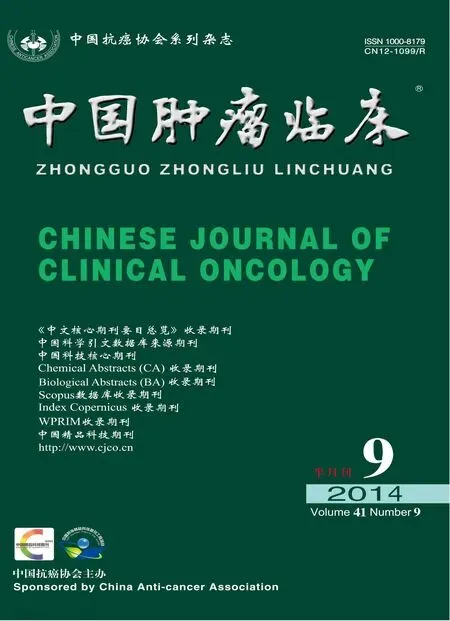腮腺多形性腺瘤外科术式的演变及发展*
刘 洪 李 超 王少新 王 薇 综述 樊晋川 审校
腮腺多形性腺瘤外科术式的演变及发展*
刘 洪①李 超②王少新②王 薇②综述 樊晋川②审校
腮腺肿瘤以多形性腺瘤居多,目前外科治疗仍是主要的治疗方式。20世纪时学者们由于对面神经解剖和多形性腺瘤包膜病理特性缺乏了解,该病的主要术式为单纯肿瘤剜除术,但术后容易导致复发;试图通过扩大切除的范围控制复发率,于是包膜外切除术开始运用于临床,虽然切除了肿瘤的包膜,但是复发率仍未能很好地控制。腮腺浅叶切除术和腮腺全切术明显降低了复发率,但是伴随着面神经损伤的加重,似乎又矫枉过正。腮腺部分切除术作为新的腮腺手术形式,不但降低了复发率、面神经损伤率,还得到病理学基础研究证据的支持,是目前较为先进的手术方式。但是在经典的腮腺浅叶切除术与先进的腮腺部分切除术之间仍存在争议。经过整形学、病理学、基因检测法等方面探究这两种手术的优劣均各有差异。本文从腮腺术式的演变历程探讨腮腺术式发展的方向。
多形性腺瘤 手术方式 腮腺肿瘤 外科学
腮腺是唾液腺肿瘤最常见的发病部位,以多形性腺瘤为代表的良性肿瘤发病率最高[1-3]。虽然医疗在近几年取得了较大的进步,新型抗肿瘤药物层出不穷,但对于腮腺良性肿瘤,手术仍是目前主要的治疗措施。腮腺良性肿瘤的手术方式主要包括早期剜除术,后期包膜外切除术,以及现在常用的腮腺浅叶切除术、全叶切除术和部分切除术。目前对于腮腺良性肿瘤手术方式的选择以及手术安全切缘范围等问题国内外仍然存在较大的争议[4-8]。本文对腮腺肿瘤治疗术式的演变及优缺点、未来发展方向予以综述。
1 腮腺肿瘤手术术式的演变
1823年Bernard首次实施腮腺肿瘤切除术。然后Bailey对该术式进行一系列改良[9-11]。腮腺肿瘤切除术至今已经有近190年历史。20世纪由于对面神经解剖和多形性腺瘤包膜病理特性缺乏了解,术后引起面瘫的发病率较高,该病的主要术式为单纯肿瘤剜除术。由于该术式未完整切除肿瘤包膜,术后容易导致复发[12-15]。1956年Perzik等[12]提出反对单纯性腮腺肿瘤剜除术,其原因是虽然剜除术有助于术中较好的保护面神经,但对腮腺肿瘤的根治是远远不够的,对周围组织进行微观研究发现此类手术导致了肿瘤组织残留,可引起复发。随着解剖学的进展,对腮腺及面神经关系结构的了解进一步加深,人们开始设想在保持面神经低损伤率的前提下是否能通过扩大切除的范围来控制肿瘤的复发。1979年,Gleave等[16]首次提出对腮腺肿瘤进行包膜外切除,其方法是沿肿瘤的包膜外壁分离切除肿瘤。Piekarski等[17]对98例进行包膜外切除的患者进行随访总结发现,进行包膜外切除的患者术后肿瘤复发率为8.2%,该组患者术后面瘫的发病率同样为8.2%。当时研究的主要方向是复发率的控制。Patey等[18]提出腮腺肿瘤的多中心性理论后,有学者认为应该行保留面神经的腮腺腺叶全切以减少术后复发的可能。Orita等[19-20]对行此手术的术后复发率进行统计学研究表明复发率可低至0.3%,然而腮腺全切术后暂时性和永久性面神经麻痹的发生率分别是腮腺浅叶切除术的2.3倍和3.0倍,腮腺全切除术后味觉出汗综合征的发生率是腮腺浅叶切除术的2.7倍,是腮腺区域切除术的4.7倍[20]。随着面神经解剖的不断深入及外科技术的成熟,腮腺浅叶切除的并发症大幅降低,而手术疗效方面却被大量的研究[15,21-22]证实,全腮腺切除术式受到了质疑[23]。此时对于腮腺多形性腺瘤的基础性研究表明腮腺多形性腺瘤很少多中心性生长[12,24],这也为腮腺浅叶术式作为腮腺当时的经典术式沿用至今奠定了理论基础。
2 腮腺多形性腺瘤的安全边界研究及腮腺肿瘤术式革新
近年来随着患者对生存质量要求不断提高,许多研究显示腮腺浅叶切除虽降低肿瘤复发率,但相比包膜外切除却增加了面神经损伤率、Frey综合征发生率[4-5,25]。又因腮腺浅叶的彻底切除造成了耳垂下区凹陷影响了患者术后的颜面外观。因此,如何在减少复发率的基础上提高患者生存质量已经成为目前腮腺肿瘤外科治疗研究的热点。因其并发症显著,人们开始思考对于腮腺多形性腺瘤这种临界肿瘤进行腮腺浅叶切除是否矫枉过正。由此,腮腺部分切除术被提出并开始应用于临床,腮腺浅叶部分切除术为腮腺浅叶切除和腮腺剜除术的折中切除术式,近似于包膜外切除,但切除范围较包膜外切除术稍宽。有研究[6,26-27]显示腮腺浅叶部分切除术可以减低术后并发症,其疗效得到肯定。基础研究方面,通过对多形性腺瘤的连续切片观察发现肿瘤具有包膜外浸润和出芽生长的特点,但这种浸润和出芽距肿瘤包膜均在1 cm以内[28]。
本研究组前期研究发现直径<4 cm的腮腺多形性腺瘤肿瘤的浸润和出芽均局限在包膜3.127~8.476 mm,与传统的手术相比改良术式组在Frey综合征、耳廓区麻木感、面部外形发生率明显降低。因而认为直径<4 cm的肿瘤,安全切缘为1 cm,而直径>4 cm的肿瘤行腮腺浅叶切除为腮腺手术的标准术式[29-30]。这也为腮腺肿瘤个体化的治疗提供了理论和实验依据。
腮腺浅叶部分切除术是目前一种成熟的外科治疗腮腺良性肿瘤术式,无论从理论还是临床术后效果角度均可认为是腮腺浅叶肿瘤的最佳选择术式。虽然目前也有文献报道对包膜外切除持支持意见,认为对术后复发率无影响,但根据基础研究,安全边界明显不够。之所以这些文献通过对患者的随访报道其复发率未增高,考虑主要原因为随访的年限不足和新技术的发展降低了复发率。
3 新技术在腮腺外科治疗中的应用
近年来,各种先进的技术和方法应用于腮腺手术以增加疗效和减少术后并发症。
3.1 超声刀在腮腺手术中的应用
超声刀(US)是一种振动频率可达55 500 HZ的超声波,是组织蛋白气化,氢键断裂而达到的切割止血效果。超声刀在刀锋边1 mm的温度为40℃,5 mm测不出温度变化,散热非常有效[31],所以腮腺手术时,只要分离出面神经后,均可使用超声刀进行手术,术后通过组织病理学检查,腮腺的切缘细胞未见明显热灼伤。更有研究[32-35]表明,超声刀的使用可以明显缩短手术时间,减少患者术后引流量,减少术后涎瘘的发生率,减少患者住院时间,操作简单,目前已经广泛应用于临床。
3.2 力确刀在腮腺手术中的运用
力确刀是对双极电刀改进的成果。其优点在于可以闭合7 mm内的血管,闭合时局部温度不高,热扩散少,热传导距离仅1.5~2 mm,对周围组织损伤小,是腮腺手术可靠和安全的设备,相比传统的手术止血效果好,节约手术时间,术后并发症明显减少、减轻[36-37]。
3.3 螺旋水刀在腮腺手术中的应用
水刀,顾名思义,以水为刀,利用水的高速切割力切断周围组织,不产生热量是其最大的优点。但巨大的压力是否会对面神经造成影响有待进一步研究,目前国外只有对动物体的实验研究[38],我国对这项技术的临床研究[39]指出与传统手术相比具有一定的优势,但这种优势并不明显。
3.4 内镜和显微镜辅助下腮腺手术
微创手术是近年来比较提倡的手术方术,以减少周围组织损伤,减少并发症为特点。内镜手术的应用主要是美容需要,使用内镜辅助进行腮腺浅叶肿瘤手术,美容效果极好,术后无永久性面瘫的发生。对于开放性手术,术中放大视野是否可以减少面神经损伤,临床报道较少[40]。
4 小结
腮腺浅叶部分切除术目前是众多学者所推崇的、可靠的手术方式,历史的演变论证了这一结果。部分切除术切除了比较少的正常组织,术后并发症如面神经功能障碍和Frey综合征的发生率也明显的降低,患者生存质量提高。腮腺术后并发症和术后美学看似一个不可调和的问题,学者们努力的在寻找一个平衡点,多个机构联合进行一个前瞻性随机性研究实验可能对决定腮腺肿瘤治疗术式的选择有帮助,但是进行这样的研究具有太多的阻碍和不可预测因素难以实施。新技术的应用可以明显的减少腮腺并发症。腮腺浅叶部分切除术作为新型术式,远期疗效还需要更多的研究进行证实。
1 Lee YM,Choi HJ,Kim JW,et al.Parotid gland tumors in a Korean population[J].J Craniofac Surg,2012,23(3):205-209.
2 Fonseca FP,Carvalho Mde V,de Almeida OP,et al.Clinicopathologic analysis of 493 cases of salivary gland tumors in a Southern Brazilian population[J].Oral Surg Oral Med Oral Pathol Oral Radiol,2012,114(2):230-239.
3 Jain R,Gupta R,Kudesia M,et al.Fine needle aspiration cytology in diagnosis of salivary gland lesions:A study with histologic comparison[J].Cytojournal,2013,31(10):5.
4 Barzan L,Pin M.Extra-capsular dissection in benign parotid tumors[J].Oral Oncol,2012,48(10):977-979.
5 Dell'Aversana Orabona G,Bonavolontà P,Iaconetta G,et al.Surgical management of benign tumors of the parotid gland:extracapsular dissection versus superficialparotidectomy-our experience in 232 cases[J].J Oral Maxillofac Surg,2013,71(2):410-413.
6 Li C,Xu Y,Zhang C,et al.Modified partial superficial parotidectomy versus conventional superficial parotidectomy improves treatment of pleomorphic adenoma of the parotid gland[J].Am J Surg,2013,[Epub ahead of print]
7 Zbären P,Vander Poorten V,Witt RL,et al.Pleomorphic adenoma of the parotid:formal parotidectomy or limited surgery[J]?Am J Surg,2013,205(1):109-118.
8 Papadogeorgakis N.Partial superficial parotidectomy as the method of choice for treating pleomorphic adenomas of the parotid gland[J].Br J Oral Maxillofac Surg,2011,49(6):447-450.
9 Bernard M.Extirpation de la Parotide[J].Memoires Observations Extraits,1823,2:60-66.
10 Bailey H.The treatment of tumors of the parotid gland[J].British Journal of Surgery,1941,111:337-346.
11 Bailey H.The technique of parotidectomy[J].J Int Coll Surg,1949,12(2):103-110.
12 Perzik SL.Parotid tumor operations;the case against enucleation[J].Calif Med,1956,85(1):26-29.
13 Bonet-Loscertales M,Armengot-Carceller M,Gaona-Morales J,et al.Multicentric recurrent parotid pleomorphic adenoma in a child[J].Med Oral Patol Oral Cir Bucal,2010,15(5):743-745.
14 Wittekindt C,Streubel K,Arnold G,et al.Recurrent pleomorphic adenoma of the parotid gland:analysis of 108 consecutive patients[J].Head Neck,2007,29(9):822-828.
16 Gleave EN,Whittaker JS,Nicholson A.Salivary tumours--experience over thirty years[J].Clin Otolaryngol Allied Sci,1979,4(4):247-257.
17 Piekarski J,Nejc D,Szymczak W,et al.Results of extracapsular dissection of pleomorphic adenoma of parotid gland[J].J Oral Maxillofac Surg,2004,62(10):1198-1202.
18 Patey DH,Thackray AC.The treatment of parotid tumours in the light of a pathological study of parotidectomy material[J].Br J Surg,1958,45(193):477-487.
19 Orita Y,Hamaya K,Miki K,et al.Satellite tumors surrounding primary pleomorphic adenomas of the parotid gland[J].Eur Arch Otorhinolaryngol,2010,267(5):801-806.
20 Witt RL.The significance of the margin in parotid surgery for pleomorphic adenoma[J].Laryngoscope,2002,112(12):2141-2154.
21 Park GC,Cho KJ,Kang J,et al.Relationship between histopathology of pleomorphic adenoma in the parotid gland and recurrence after superficial parotidectomy[J].J Surg Oncol,2012,106(8):942-946.
22 Donati M,Gandolfo L,Privitera A,et al.S Superficial parotidectomy as first choice for parotid tumours[J].Chir Ital,2007,59(1):91-97.
23 Pitak-Arnnop P,Dhanuthai K,Hemprich A,et al.Does pleomorphic adenomareally require total parotidectomy[J]?Ann Surg Oncol,2011,18(3):S248-249.
24 Dunn EJ,Kent T,Hines J,et al.Parotid neoplasms:a report of 250 cases and review of the literature[J].Ann Surg,1976,184(4):500-506.25 Uyar Y,Ca lak F,Keleş B,et al.Extracapsular dissection versus superficial parotidectomy in pleomorphic adenomas of the parotid gland[J].Kulak Burun Bogaz Ihtis Derg,2011,21(2):76-79.
26 Zhang SS,Ma DQ,Guo CB,et al.Conservation of salivary secretion and facial nerve function in partial superficial parotidectomy[J].Int J Oral Maxillofac Surg,2013,42(7):868-873.
27 Calvo JS,Lemberg PM.Thirteen years'experience with partial superficial parotidectomy as treatment for benign parotid tumours[J].Acta Otorrinolaringol Esp,2011,62(4):331.
28 Qiu JX,Zhu SR,Huang S,et al.Demarcating the regional excision of parotid pleomorphic adenoma[J].J Clin Stomatol,2008,24(1):30-31.[邱嘉旋,朱声荣,黄松,等.腮腺多形性腺瘤并腺体区域性切除边界的界定[J].临床口腔医学杂志,2008,24(1):30-31.]
29 Xu YQ,Li C,Fan JC,et al.Evidence for determining the safe surglcal margin for pleomorphic adenoma of parotid gland[J].Chin J Otorhinolaeyngol Head Neck Surg,2012,47(2):137-141.[徐义全,李 超,樊晋川,等.腮腺多形性腺瘤安全手术切缘的界定[J].中华耳鼻咽喉头颈外科杂志,2012,47(2):137-141.]
30 Li C,Xu YQ,Fan JC.Advances in the Research of Surgical Margins for Pleomorphic Adenoma of Parotid Gland[J].Chin J Clin Oncl,2010,4(38):238-240.[李超,徐义全,樊晋川.腮腺多形性腺瘤安全手术切缘研究进展[J].中国肿瘤临床,2010,38(4):238-240.]
31 Koch C,Friedrich T,Metternich F,et al.Determination of temperature elevation in tissue during the application of the harmonic scalpel[J].Ultrasound Med Biol,2003,29(2):301-309.
32 Prgomet D,Janjanin S,Bura M,et al.The use of harmonic scalpel in head and neck surgery:a report on 161 patients[J].Lijec Vjesn,2008,130(7-8):178-182.
33 Fang YH.Application of harmonic skalpel in 30 cases in parotid surgery[J].FuJian Med J,2010,32(6):126-127.[方亦鸿.超声刀在30例腮腺手术中的应用[J].福建医药杂志,2010,32(6):126-127.]
34 Qu ZY.Application of ultrasonic scalpel in parotid surgery[J].Chinese Journal of Practical Stomatology,2011,5(4):312-314.[屈振宇.超声刀在腮腺手术中的应用[J].中国实用口腔科杂志,2011,5(4):312-314.]
35 Wang XD.Application of Focus ultrasonic scalpel in parotid surgery[J].Chin J Stomatol,2010,45(6):384.[王旭东.Focus超声刀在开放性腮腺手术中的应用[J].中华口腔医学杂志,2010,45(6):384.]
36 Colella G,Giudice A,Vicidomini A,et al.Usefulness of the LigaS-ure vessel sealing system during superficial lobectomy of the parotid gland[J].Arch Otolaryngol Head Neck Surg,2005,131(5):413-416.
37 Prokopakis EP,Lachanas VA,Vardouniotis AS,et al.The use of the Ligasure vessel sealing system in head and neck surgery:a report on six years of experience and a review of the literature[J].B-ENT,2010,6(1):19-25.
38 Andratschke M,Lörken J,Eggers R,et al.Histomorphologic findings in the facial nerve after water-jet dissection of the parotid gland in dogs[J].HNO,2011,59(10):1045-1053.
39 Zhang DK,Guo ZM,Zhang Q,et al.Application of Helix Water Jet to Parotid Surgery[J],Chinese Journal of Cancer,2008,27(1):105-108.[张冬坤,郭朱明,张诠,等.螺旋水刀在腮腺肿瘤手术中的应用[J].癌症,2008,27(1):105-108.]
40 Fan YP,Feng SY,Lu MH,et al.Application of OPMI vario/S88 in dissection of facial nerve with parotid sugery[J].Chin J Otorhinolaeyngol Head Neck Surg,2010,45(8):685-686.[樊韵平,冯韶燕,吕明慧,等.显微镜在腮腺手术面神经解剖中的应用[J].中华耳鼻咽喉头颈外科杂志,2010,45(8):685-686.]
(2014-01-21收稿)
(2014-04-08修回)
Development and history in parotid pleomorphic adenoma surgery
Hong LIU1,Chao LI2,Shaoxin WANG2,Wei WANG2,Jinchuan FAN2
Chao LI;E-mail:sclichao@qq.com
1Guangxi Medical University,Nanning 530021;2Department of Head and Neck Surgery,Sichuan Cancer Hospital&Cancer Institute,Chengdu 610041,China.
Pleomorphic adenoma ranks first among parotid gland tumors.Surgical procedure,which includes enucleation,extra-capsular resection,partial superficial parotidectomy(PSP),superficial parotidectomy(SP),and total parotidectomy(TP),remains to be the treatment of choice for pleomorphic adenoma.In the last century,physicians lacked understanding on the pathological characteristics of pleomorphic adenoma and facial neurotomia.Thus,simple enucleation of tumors has always been the major therapy for patients to reduce the rate of facial nerve injury.However,postoperative recurrence was frequently observed in patients that have undergone simple enucleation.In this study,the surgeons attempted to control the relapse rate by enlarging the scope of excision when removing a pleomorphic adenoma,and by performing an extra-capsular resection procedure that was developed in the clinic.Although the tumor peplos was excised,the surgeons failed to control the relapse rate.SP and TP apparently decreased the relapse rate of the pleomorphic adenomas.However,these therapies seem to be overcorrected by the aggravation of facial nerve injuries.PSP is a relatively advanced technique that is currently used in parotid surgery.PSP reduces the rate of relapse and facial nerve injury,as verified by basic pathology research.Nevertheless,the controversy between advanced PSP and classic SP still exists.Plastic surgery,pathology research,and gene testing were used to evaluate the advantages of advanced PSP and classic SP.However,the research failed to derive a confirmed result that can determine which treatment method is fit and unfit to treat pleomorphic adenoma.Our study reviews the trend of parotid surgery from a historic point of view.
pleomorphic adenoma,surgical procedure,parotid neoplasm,surgery
10.3969/j.issn.1000-8179.20140123
①广西医科大学研究生学院(南宁市530021);②四川省肿瘤医院头颈外科
*本文课题受国家自然科学基金项目(编号:81302375)、四川省科技厅计划项目(编号:2012JY0125)和四川省卫生厅科研项目(编号:130230,110259)资助
李超 sclichao@qq.com
The study was supported by grants from the National Natural Science Foundation of China(No.81302375:Mechanism research on microenvironment change,EXOSOME with mir-155 in deoxygen MDS/Treg,prior to oral cancer metastasis),theApplied Projects of Sichuan Provincial Bureau of Science and Technology(No.2012JY0125:Research on the safe margin of parotid pleomorphic adenoma,fundament and clinic for modifying function preserving surgery,adds Meta Analysis),and the Projects of Sichuan Provincial Bureau of Science and Technology(No.130230 and 110259:Comparative research on Frey's syndrome and facial mobility with surgery after parotidectomy).
(本文编辑:邢颖)

刘洪 硕士研究生。研究方向为头颈部肿瘤的综合治疗。
E-mail:233082449@qq.com

